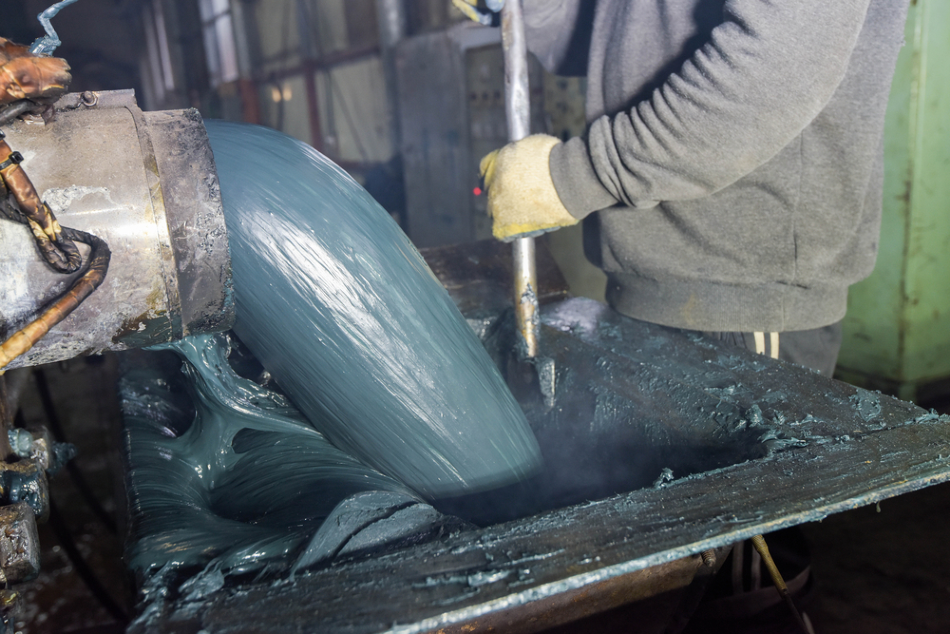
Image Credit: wittaya photo/Shutterstock.com
What is Dynamic Mechanical Analysis?
Dynamic Mechanical Analysis, known as DMA, is a method that tests the physical properties of both solids and polymer melts. It is used to generate data on the modulus and damping and can measure properties such as force, frequency, strain, stress, and temperature.
It can measure the flow of matter in solids and can also be combined with measurements of the temperature response to conduct Dynamic Mechanical Thermal Analysis (DMTA).
The use of the technique has emerged in a number of settings; however, recent years have seen its use in analyzing industrial automation machinery grow. As technology has advanced, improving and developing new electronic circuits, better transducers, enhanced signal receiving systems, and updated computerized controlling systems, the use of DMA has increased, and it has been increasingly used in industrial settings.
The technique can reliably characterize surfaces and materials, which is useful in the analysis of industrial automation machinery. Importantly, it is used in failure analysis, allowing engineers to predict and prevent machine failures before they happen, reducing the time and resources wasted due to fixing machinery and eliminating loss of productivity through unscheduled down-time.
In particular, DMA is being used to analyze the polymer and rubber components that are being increasingly used in industrial automation machinery.
How Does DMA Work?
DMA works by applying stress to a sample in the form of an oscillating force. The oscillating sample response is then recorded by specialized equipment. The elastic response is used to calculate the modulus, and the viscous response is used to calculate damping. In other words, the calculation is of the measurement of the sample response “in phase” and “out of phase”, respectively.
The calculation of damping is important in DMA, it refers to the dissipation of physical energy stored in a material under cyclic load. Engineers use the calculation of damping as a gauge of how well a material releases energy. The measurement is given as a tangent to the phase angle of the material. Damping measurements also give an indication of how well a material can absorb energy.
A material’s damping measurements will alter under the influence of external factors, such as heat. In an industrial setting, this is an important factor to consider, as the heat generated from long term operation, as well as placing equipment in rooms with other heat-producing machinery, will impact the performance of the materials.
DMA can also be used to give an indication of a material’s stiffness when force is applied to the sample in the form of a sinusoidal deformation. For this known stress, the sample will respond by deforming slightly - the extent of this deformation relates to the material’s stiffness. Specialized equipment in the form of a force motor and driveshaft is used to generate the sinusoidal wave that is applied to the material sample.
The Limitations of Dynamic Mechanical Analysis
However, there has been concern over limitations of this method, given that springs and stabilizing bearings are relied on by traditional drive shafts to apply the correct amount of force to the material; components may not comply and this may result in inaccurate force exertions. Recently, new technology has been developed that addresses this issue. A drive shaft has been innovated that does not require bearings or springs to support the drive shaft.
In industrial automation, DMA can be used to select the appropriate materials for machinery. It can predict how they will behave over long periods of operation, which can enable engineers to predict which materials will perform best. DMA can also be used to analyze machinery that is currently in use to determine how well it is performing, if adjustments need to be made, and if machinery failure is highly probable.
Click here for more information on robotics equipment.
Therefore, DMA can be used to enhance productivity in industrial settings through preventing pauses in production due to machinery down-time, as well as by helping engineers design better performing machinery through the analysis of the materials used to create it.
In addition, DMA can improve the profitability of operations that use automated machinery in cutting the costs relating to machinery maintenance and repair and by helping to design machines that can work faster without risk of failure.
The Future of DMA in Analyzing Automation Machinery
It is likely that DMA will continue to be used in the mechanical analysis of industrial automation machinery well into the future. As technological developments continue, DMA is expected to become more commonplace in this setting, with more companies choosing to add it to their processes as the value of DMA becomes clearer.
It is possible that DMA will help next-generation automation machinery to be designed, as well as helping in the identification of new materials that may outperform those traditionally used in DMA.
References and Further Reading
Ebnesajjad, S. and Khaladkar, P., 2005. Failure Analysis. Fluoropolymers Applications in the Chemical Processing Industries, pp.315-357. https://www.sciencedirect.com/science/article/pii/B9780815515029500132
Ebnesajjad, S., 2014. Surface and Material Characterization Techniques. Surface Treatment of Materials for Adhesive Bonding, pp.39-75. https://www.sciencedirect.com/science/article/pii/B9780323264358000046
Menard, K. and Menard, N., 2015. Dynamic Mechanical Analysis in the Analysis of Polymers and Rubbers. Encyclopedia of Polymer Science and Technology, pp.1-33. https://onlinelibrary.wiley.com/doi/full/10.1002/0471440264.pst102.pub2
Murayama, T., 1984. Dynamic Mechanical Analysis Application to Dynamic Thermomechanometry. Analytical Calorimetry, pp.81-93. https://link.springer.com/chapter/10.1007/978-1-4613-2699-1_8#citeas
Disclaimer: The views expressed here are those of the author expressed in their private capacity and do not necessarily represent the views of AZoM.com Limited T/A AZoNetwork the owner and operator of this website. This disclaimer forms part of the Terms and conditions of use of this website.